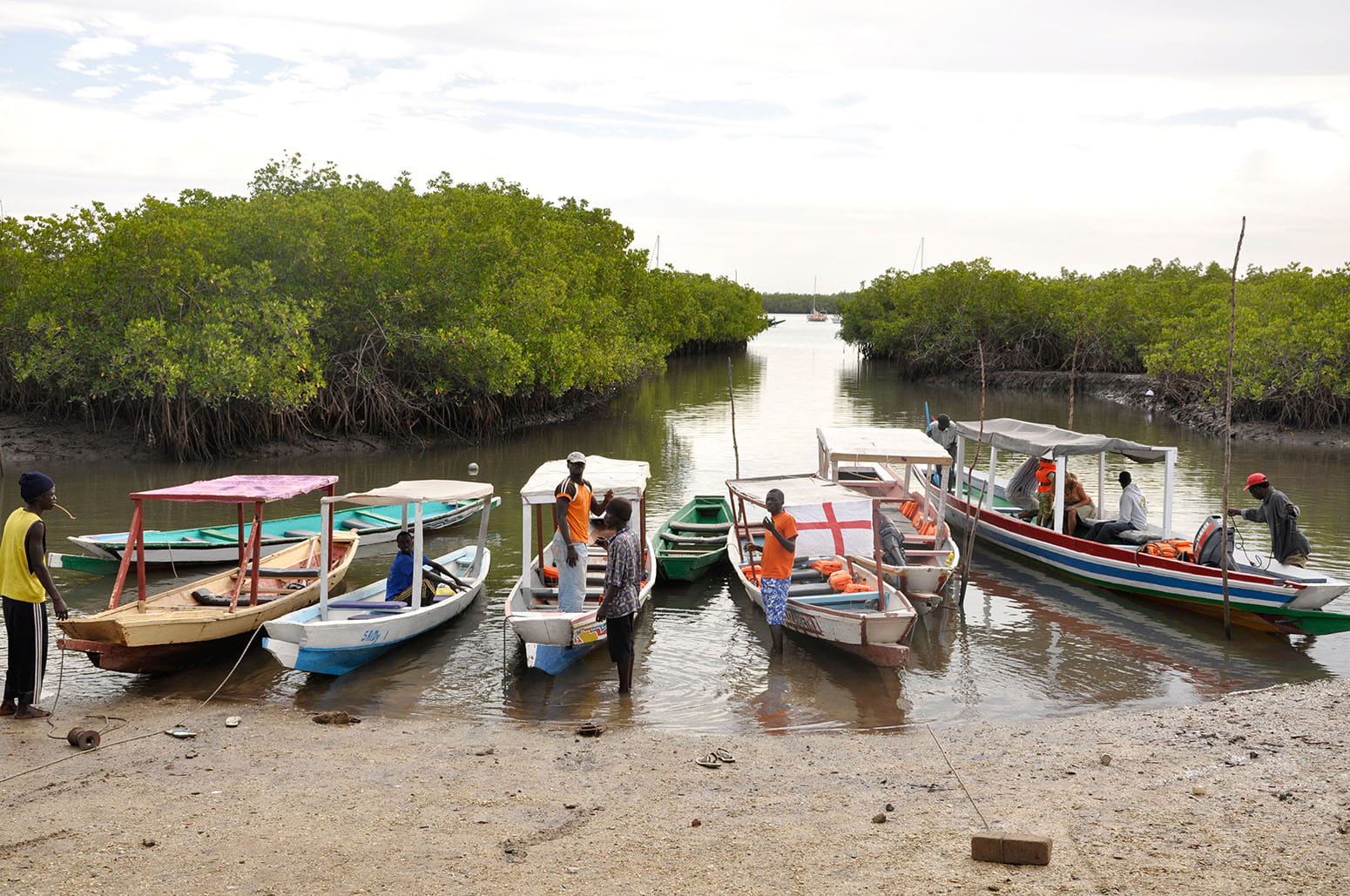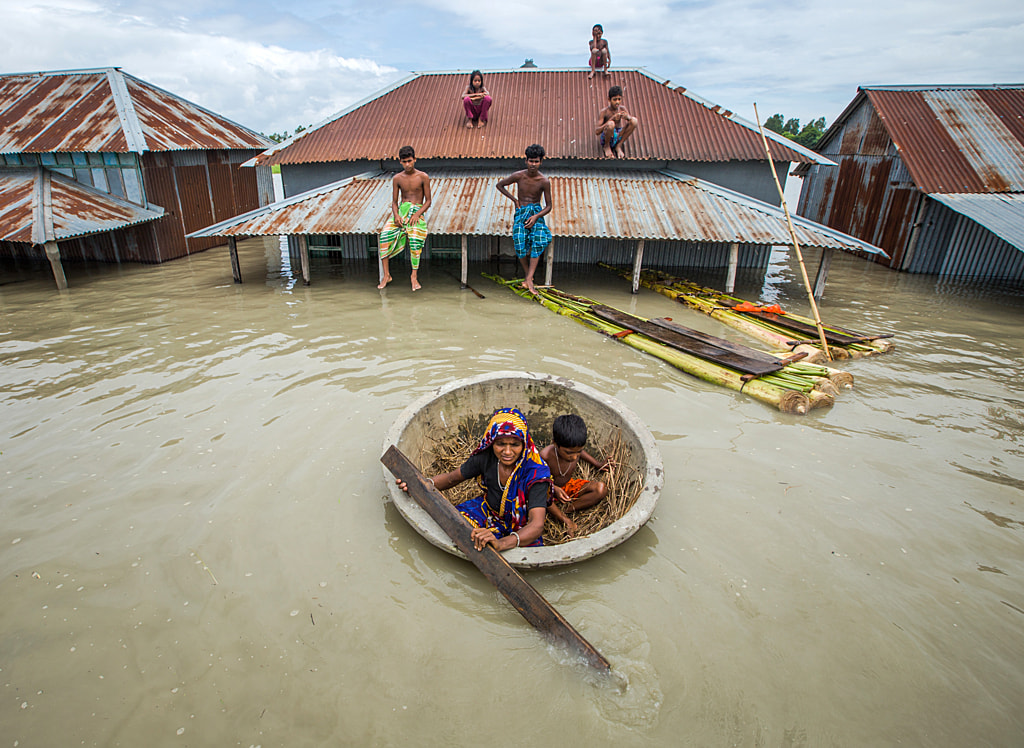

Interactive: How the world is already adapting to climate change
By Ayesha Tandon and Josh Gabbatiss
Design by Kerry Cleaver, Tom Pearson and Tom Prater
People around the world are already living with the impacts of climate change. Faced with record-breaking heatwaves, storms and floods, many have been forced to adapt to a new reality.
Climate adaptation can take many forms. It could mean a farmer learning to grow drought-resistant crops, a community erecting a sea wall, or vulnerable families moving to a safer location away from floods.
The vast variety of these activities makes it challenging to build a complete picture of how prepared the world is for the growing threat of climate change.
In 2021, a large, international team of researchers published the most comprehensive assessment to date of the scientific literature on climate adaptation.
They analysed nearly 1,700 case studies of climate adaptation, revealing how people from the low-lying islands of Tuvalu to the mountains of Nepal are protecting themselves from climate hazards.
► Explore all of the studies in Carbon Brief’s interactive table.
Here, Carbon Brief has pulled out some of the key findings from the research, exploring some of the key trends and what they reveal about the global response to climate change.
Where is adaptation happening?
Adaptation projects are wide-ranging in both scope and geography. While many large-scale projects are planned and monitored by governments or businesses, others are implemented locally and informally by communities adapting to their changing climate. This means it has historically been tricky to assess the full scope of current adaptation efforts.
As the international community has grown to recognise adaptation as a crucial component of humanity’s response to the changing climate, the number of scientific studies on climate adaptation has surged.
The sheer volume of climate adaptation literature is becoming “unwieldy”, Dr Alexandra Lesnikowski – an assistant professor in geography planning and environment at Concordia University – tells Carbon Brief. Lesnikowski and hundreds of other experts set up the Global Adaptation Mapping Initiative (GAMI) to tackle this problem head on.
The global network of 126 researchers spent around two years using a combination of machine learning and manual coding to systematically screen peer-reviewed articles published over 2013-19 – in a range of languages – that mentioned climate change and adaptation.
The team initially identified more than 48,000 articles that mentioned climate change and adaptation. Of these, they found that 1,682 articles were about on-the-ground measures taken by communities to adapt to climate change. The other 95% of articles provided “conceptual or theoretical” discussions of climate adaptation, or plans for future adaptation measures.
In 2021, the experts published an analysis of the 1,682 articles on implemented adaptation measures. The locations of these measures are shown in the map below, where each green tile indicates a different academic article.
The study is “a very good reflection of what we know from scientific peer-reviewed literature”, Lesnikowski tells Carbon Brief. However, she notes that the project only looks at articles published in peer-reviewed journals, as it was “infeasible” to analyse all documentation on adaptation.
This means that not all documented climate adaptation measures are shown on the map.
“We use the scientific literature as a proxy for understanding what [adaptation] trends look like,” Lesnikowski explains. She says that this is an “essential component” for building the picture of global adaptation, but that it “needs to be complemented by other types of assessment”.
The analysis shows how the number of adaptation studies, and their focus, varies between world regions.
The graphics below show the number of adaptation papers from key regions. Hover over the green tiles for more study details. (Note that the order of the studies is random.)
► For a full list of papers from specific countries, use Carbon Brief’s interactive table.
The single country with the most documented adaptation projects is the US, which saw a total of 139 projects over 2013-19.
These include installing reflective “cool roofs” in California, improving resistance to coral bleaching in Hawaii and government programmes to support declining fishing communities in Alaska that are affected by rising temperatures.
US: 139/1,682 papers
 Hover over the green tiles for study details
Hover over the green tiles for study details
Roughly one-third of the papers covered projects in Asia, particularly south Asia.
Among them were studies of drought-resistant crop planting in southern India, migration from flood-prone areas of Bangladesh and the response of community clinics to climate-related health problems in Vietnam.
Asia: 609/1,682 papers
A further one-third of papers detail adaptation responses in Africa – concentrated in southern and eastern Africa.
These include the expansion of rainwater collection in the Sahel, changes to the traditional farming practices of the Kenyan Maasai and local government interventions to avert floods in an informal settlement in Cape Town, South Africa.
Africa: 571/1,682 papers
The study also finds gaps in evidence of adaptation in many regions in the global south. For example, the Middle East and North Africa are home to around 6% of the world’s population, but only 3.5% of papers in this study assess them.
Middle East and north Africa: 39/1,682 papers
The study concludes that “documented adaptations were largely fragmented, local and incremental, with limited evidence of transformational adaptation and negligible evidence of risk reduction outcomes”.
The authors also note that as few studies attempted to measure whether adaptation efforts were effective or not, some of the responses may, in fact, be examples of “maladaptation”. This refers to adaptation projects that inadvertently leave those involved more vulnerable to climate change than they were to begin with.
Overall, they highlight future assessments of adaptation effectiveness – including everything from crop yields to health outcomes – as a “key priority” for researchers working in this field.
The work was a key source of information for the most recent report from the Intergovernmental Panel on Climate Change and has sparked multiple follow-up studies.





